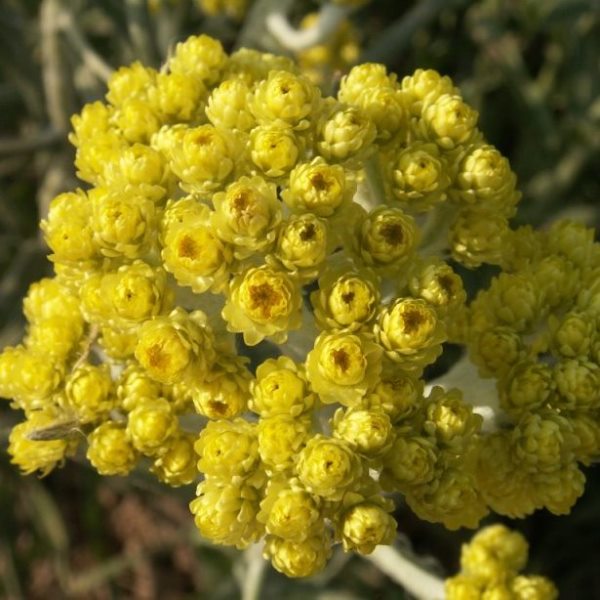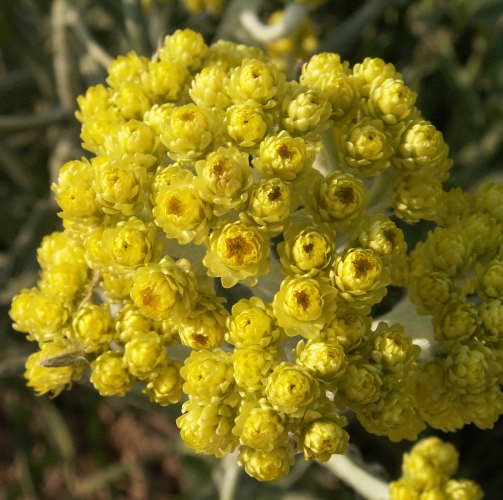.png)
.png)




Botanical name Helichrysum italicum
Family Asteraceae
Source Leaves and flowers
Origin Slovenia
Processing Method Steam Distillation
Color/Consistency A thin, clear, pale yellow to reddish yellow liquid.
Aromatic Summary / Note / Strength of Aroma A middle note with a medium aroma, they have been described as having a scent between burnt sugar and a floral mint.
Blends With Clove Bud, Rose, Clary Sage, Lavender, Chamomile and any of the oils from the citrus oil family.
Product Abstract
Helichrysum is a natural medicinal plant that’s used to make a beneficial essential oil that boasts many different full-body benefits due to its anti-inflammatory and antioxidant properties. While the reference to “long life” made by these names may have come about because the flowers dry without losing their color and beauty, it could just as well refer to the amazing properties of the oil, which has a wide range of applications.
History
Hilliard (1983) divided this large and heterogeneous genus in 30 morphological groups. But this genus is controversial and is considered by many as an artificial genus. The taxonomy of the large polymorphic and probably polyphyletic Helichrysum genus is complex and not yet satisfactorily resolved.
Harvesting/Extraction Information
Helichrysum is one of the most fragrant plants which contribute to giving the Corsican “maquis” its characteristic perfume. The flowering head buds, called “The flowery summit” which are treated the day after picking, are traditionally hand cut thus leaving the Maquis unspoilt by modern machinery. Harvesting takes place from June to July when flowering commences. Over a ton of flower heads are needed to make about 0,85 kg of essential oil! This is why it is quite expensive.
The Helichrysum Italicum essential oil is obtained by distilling, usually by steam in a copper free steam process. The Mediterranean Helichrysum is much richer in Terpenes has more Neryle acetate and Diones.
Common Usage
Caution
No toxic or irritating effects have been observed or reported from the use of this oil, but being an anticoagulant, those who have undergone surgery or have chances of internal hemorrhaging should avoid using it.
Key constituents
a-Terpinene 15.%
b-Pinene 11.22%
1,8-Cineole 06.12%
Bicyclogermacrene 8.1%
d-Cadinene 6.5%
Cubebol 6.13%
a-Phellandrene 6.5%
p-Cymene 4.02%
Germacrene D-4-ol 3.8%
Sabinene 3.4%
a-Cadinol 2.6%
Camphor 01.2%
Safety summary
Hazards None known.
Contraindications None known
Organ-specific effects No information found.
Systemic effects
Acute toxicity No information found.
Carcinogenic/anticarcinogenic potential No information was! found for peta oil, but it contains no known carcinogens. a- Cadinol is active against the human colon cancer cell line HT- 29.
Comments
The oil is produced on a small scale in South Africa.